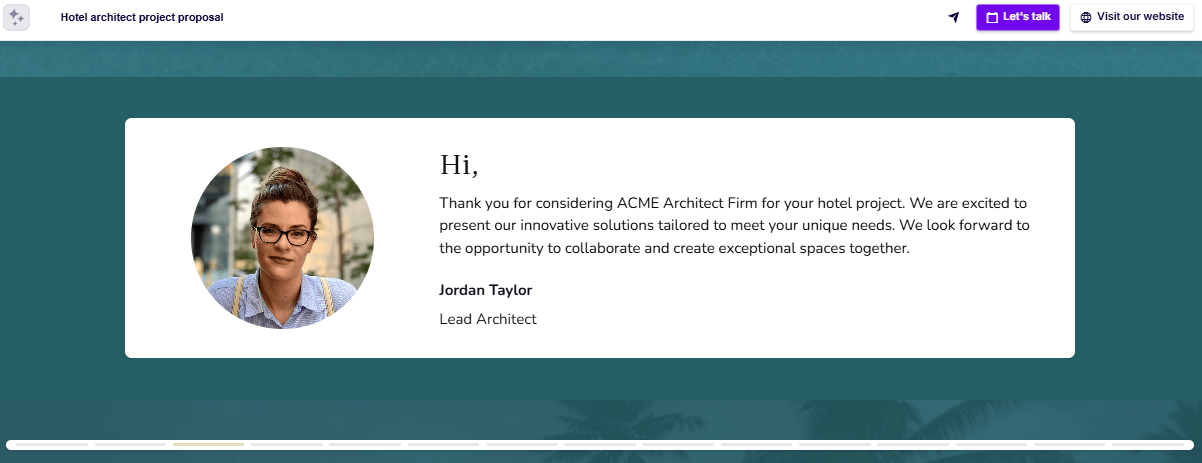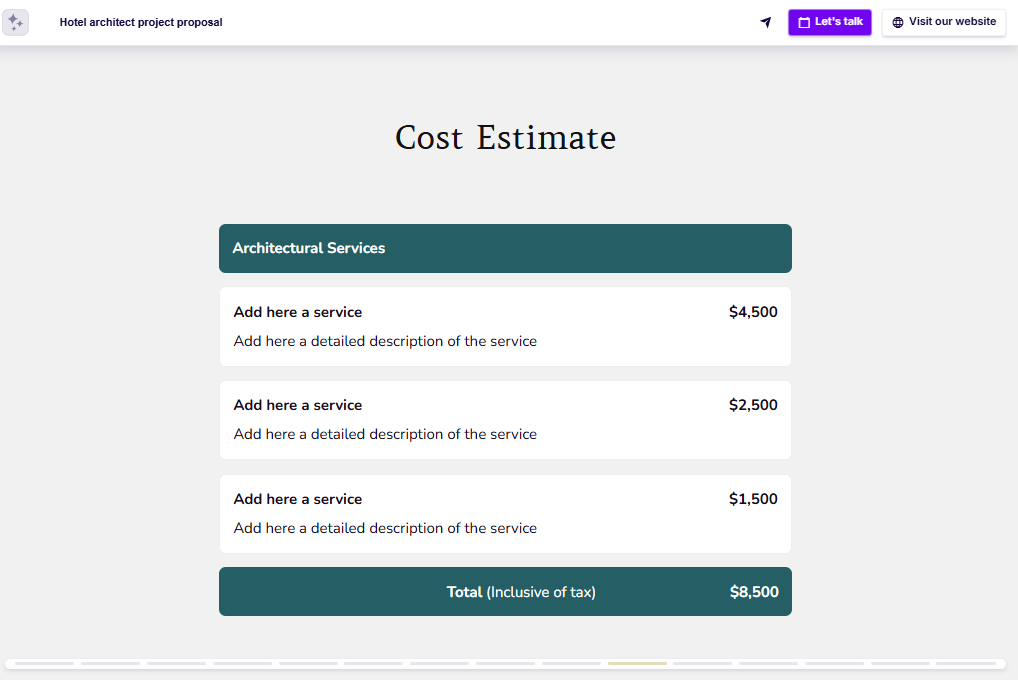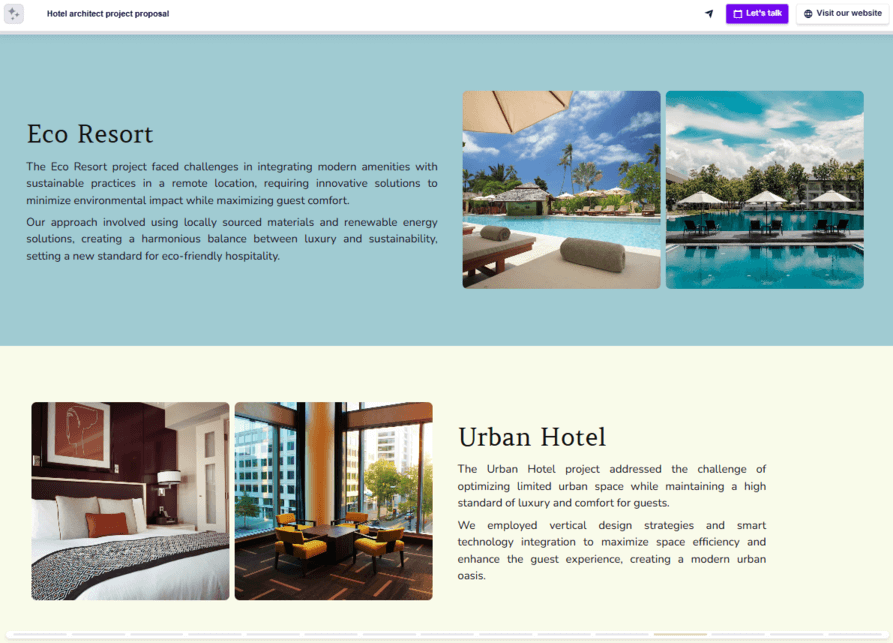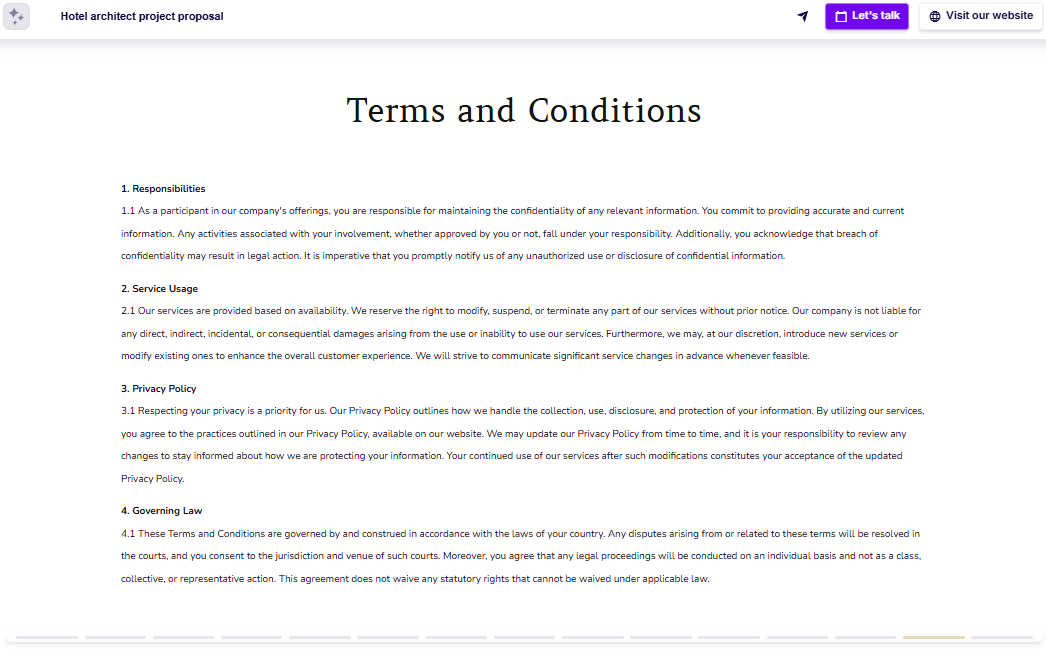How to Write an Architecture Project Proposal (+Examples)
Learn how to write an architectural project proposal with tips on format and structure. See examples and get templates to make your architecture proposal.


Learn how to write an architectural project proposal with tips on format and structure. See examples and get templates to make your architecture proposal.
Short answer
An architecture proposal is a detailed document architects create to outline a project's vision, scope, timeline, and costs for their clients.
Its purpose is to build trust, set clear expectations, and highlight expertise—turning ideas into actionable plans that inspire confidence and win approval.
Stop losing opportunities to ineffective presentations.
Your new amazing deck is one click away!
















